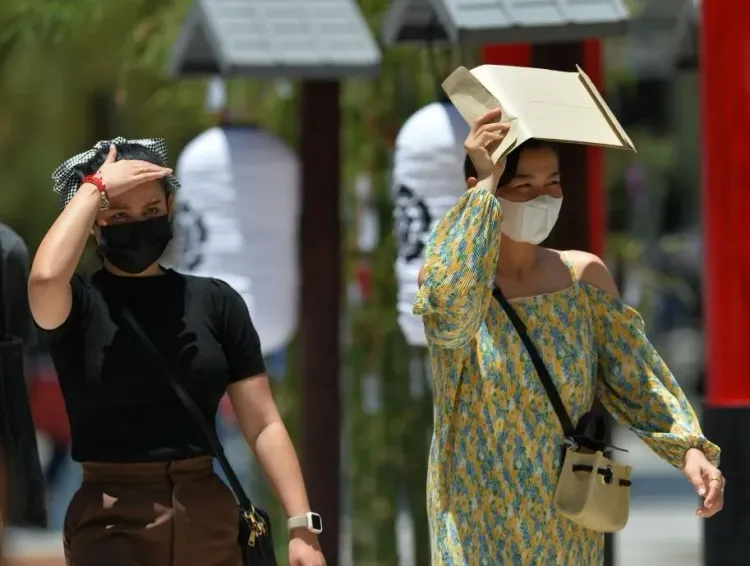Is July's Heatwave Breaking Records in China's Henan Province?

Synopsis
Key Takeaways
- Henan Province is experiencing its hottest July since 1961.
- Average temperatures are 3.8 degrees Celsius above historical norms.
- Relief from the heatwave is expected after July 21.
- High temperatures are affecting several regions across China.
- A yellow alert has been issued for various areas due to extreme heat.
Zhengzhou, July 18 (NationPress) Central China's Henan Province, one of the most densely populated areas in the country, is experiencing its hottest July since 1961, as a relentless heatwave envelops much of the region, according to local meteorological authorities.
As of early July, Henan has reported an average of 10.8 high-temperature days, defined as days with temperatures reaching 35 degrees Celsius or higher, which is 7.8 days more than the seasonal norm. Seven weather stations have documented their longest-ever series of such days in July.
The average temperature for the province this month has soared to 3.8 degrees Celsius above the historical average, with daily high temperatures surpassing 40 degrees Celsius in 131 counties and districts between July 13 and 16, as reported by Xinhua news agency.
Meteorologists have linked the extreme temperatures to a subtropical high-pressure system that traps heat, causing hot and dry conditions.
Relief from the heatwave is anticipated starting July 21, with widespread rainfall predicted across the province.
On Friday, China’s national observatory issued a renewed yellow alert, cautioning residents of high temperatures in various regions across the country. Areas within southwest China’s Chongqing Municipality, Sichuan Province, and the Xinjiang Uygur Autonomous Region are forecasted to experience temperatures exceeding 40 degrees Celsius.
China has established a four-tier weather warning system, with red indicating the most severe level, followed by orange, yellow, and blue.
On July 14, a prolonged heat wave was projected to affect multiple regions across China from July 14 to 22, with certain areas expected to reach or exceed historical temperature records, according to the National Meteorological Centre (NMC).
“With the subtropical high-pressure system advancing northward, heatwave conditions have intensified in recent days over North China and the Yellow-Huaihe River basin,” stated Zhang Bo, a forecaster with NMC. “The regions experiencing daily maximum temperatures above 37 degrees Celsius are expanding, and the humid heat is becoming increasingly noticeable.”










